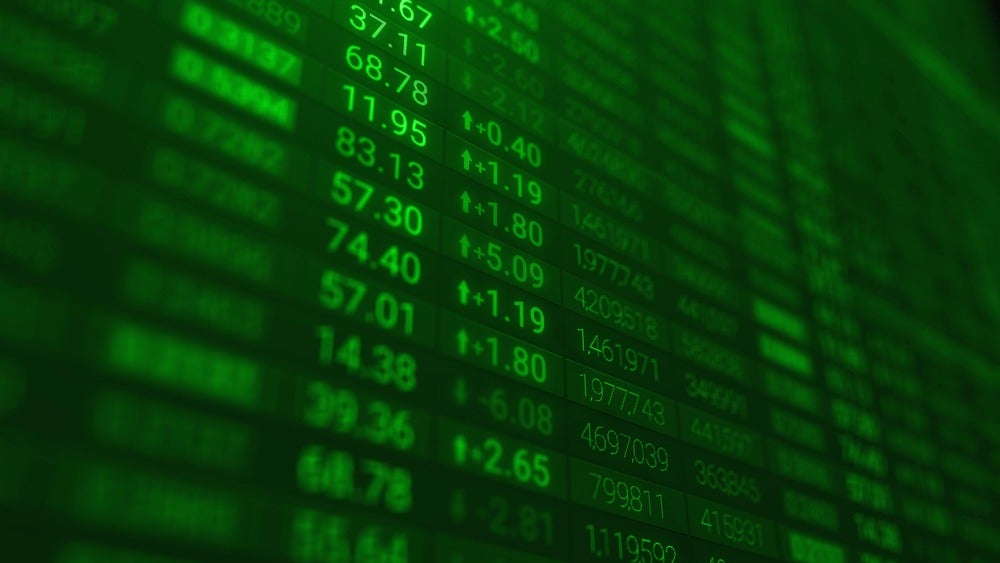Since the launch of the first $1 billion green bonds in 2013, the market has never looked back and in 2019, global issuance of green bonds is expected to top $300 billion, more than double the 2018 figure.
According to the Climate Bonds Initiative, the green bond market began in 2007 with the AAA-rated issuance from the European Investment Bank and World Bank.
How well do you really know your competitors?
Access the most comprehensive Company Profiles on the market, powered by GlobalData. Save hours of research. Gain competitive edge.

Thank you!
Your download email will arrive shortly
Not ready to buy yet? Download a free sample
We are confident about the unique quality of our Company Profiles. However, we want you to make the most beneficial decision for your business, so we offer a free sample that you can download by submitting the below form
By GlobalDataSix years later, the International Finance Corporation (IFC) issued the first $1bn green bond, which sold within an hour of issuance, and which many say was a tipping point.
In the five years to 2018, the green bond market has grown three-fold with no sign of an end to the market’s expansion.
Persian Gulf energy outlook
For governments and developers in the Gulf Cooperation Council ( GCC), the question is whether they can tap this type of alternative financing model.
There has been one green bond to date in Abu Dhabi, which was launched in 2017 by the National Bank of Abu Dhabi, now known as First Abu Dhabi Bank (FAB).
The five-year green bond, which was listed on the London Stock Exchange, was priced at a spread of 98 basis points over mid-swaps and pay a coupon of 3 per cent annually.
The bond covered three projects:
• 100MW Shams concentrated solar power plant (UAE)
• Etihad Rail network (UAE)
• One other project in the US
In October 2018, the region saw the establishment of its second eco-friendly financial instrument when Abu Dhabi-based clean energy and sustainable technology investor Masdar signed a green revolving credit facility with FAB, Societe Generale, Sumitomo Mitsui and UniCredit.
The facility, which will be used by Masdar for general corporate purposes is the first in the Middle East.
By deploying such alternative financing mechanisms in the region, Masdar is paving the way for other local and regional borrowers to consider such commitments through its credit facilities and contribute to the country’s 2050 energy goals.
United Arab Emirates
The United Arab Emirates (UAE) aims to increase the contribution of clean energy in its total energy mix to 50 per cent by 2050, reduce its carbon footprint of power generation by 70 per cent, and boost consumption efficiency of individuals and corporates by 40 per cent.
For the UAE to reach these 2050 targets, it is estimated that the country must invest an estimated $163 billion into clean energy technologies.
The revolving door credit facility, which allows borrowing, paying and repeat is a way to help a company raise instant capital to help support any project.
But given the energy diversification and sustainability targets for the region, the opportunity for such financial mechanisms would hold huge potential.
Following the downturn in oil prices in 2014 and continued volatility, the GCC has increased its drive to attract private investment.
“We cannot do all this until we open the doors to new partnerships,” said UAE economy minister Sultan al-Mansoori in 2018. “We may not be able to continuously invest so we have to look at the future to create partnerships where we get maximum benefit from companies with knowledge, technology, creativity and innovation.”
This article is sourced from Power Technology sister publication www.meed.com, a leading source of high-value business intelligence and economic analysis about the Middle East and North Africa. To access more MEED content register for the 30-day Free Guest User Programme. https://www.meed.com/registration/







Related Company Profiles
Societe Generale SA
Masdar (Inactive)
IFC, LLC
First Abu Dhabi Bank
GCC